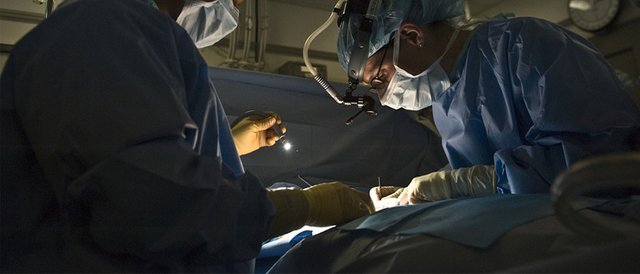
The world has many medical dynasties, but there are also doctors who make their path from a prospective university student to an acknowledged expert on their own. It may safely be said that Pyotr Kolomensky belongs to such type of doctors. Having a great deal of practical knowledge under his belt, in recent years Pyotr has been actively working on training and testing the medical neuronets, which is the future of world diagnostics.
Modern medicine uses imaging tests to detect oncology diseases. A biopsy enables the tissue recovery from the area that is suspicious to the doctor. Computer tomography is the multilayer X-rays computer-mediated into 3D model. At that, the doctor can recognize even minor tissue patches (areas of interest), which arouse suspicion. In the case of hollow organs, for example, the stomach, endoscopy is applied, which is performed with a flexible probe.
With these and other modern methods of diagnosing the oncology diseases in its arsenal, modern medicine still cannot provide absolute guarantees of accuracy in the establishing of each diagnosis and there are several reasons for this:
- Cells can mutate, change, and therefore they can have new traits.
- A doctor is a common person who may be tired, feel bad or be upset about something. Any diagnosis is the opinion of the doctor, based on experience, expertise, knowledge, but still, it is a subjective conclusion. Complicated cases require even more concentration and technical skills for establishing diagnosis, and also in most cases the time is limited.
- The migration of specialists and the under-staffing of some hospitals and clinics by doctors with extensive clinical experience can negatively affect the accuracy of the medical assessment in almost any clinical case.
There was an urgent need for high-speed, learning mass data analysis system. Such systems are able to provide a greater percentage of successful diagnoses and unload the doctor, allow to exclude or minimize the human factor. Time is the most important factor for the successful treatment of malignant diseases. But, for example, when detecting nodes at lung cancer, the doctor cannot immediately say whether the node is harmless or not, and is forced to monitor the development of oncogenesis.
Today at the diagnosis of skin cancer, the primary diagnostic method is visual analysis and dermatoscopy, and in recent years the laser scanning microscopy is applied. The latter makes it possible to see the structure of the tumor without injuring the skin. But again the laser scanning microscopy is only an imaging method and is not the automated analysis.
Carcinoma is the most common type of cancer that can form not only on the epithelium of the internal organs but also on the skin. Melanoma is the most dangerous type of malignant tumor of the skin, generating metastatic disease in most cases. Kolomensky in engaged into detection of such types of skin oncology with the help of medical neuronet.
Pyotr is responsible for training the digital intelligence in order to automate the process of diagnosis, minimizing the impact of the human factor on the final result.
Dr. Kolomensky “introduces” the neuronet with tens of thousands of clinical cases in the form of selected images. After that, on the basis of the input data, the system should independently recognize and diagnose the disease, “pass the exam” and receive a good mark. The task of the expert tutor is to achieve a solid performance and a lower percentage of errors in comparison with normal clinical practice. And today we succeed.
Dr. Kolomensky is responsible for one more important area of the Intelligent Medical Developments company researches, it is the determination of the extent and depth of burns using digital intelligence. A burn is an injury that each of us has encountered at least once in our life. A burn is not always just a skin lesion; bony tissue can also be injured depending on the degree of the burn.
Correct determination of the degree of burn significantly affects the effectiveness of treatment by giving a clue if the urgent surgical intervention is necessary or only therapeutic procedures can be performed. In this case, a favorable prognosis can be expected with early detection and delivery of health care in the first hours after the burn. Aftertreatment is also an important step. The deep lesion can cause the wound infection and the pain shock.
The degree of burn may be different on different areas of the skin of the same person, which means that different treatments must be prescribed, different conditions and aftertreatment programs must be created. All this ultimately affects the health and performance of the patient in the future and is achieved through a quick and correct assessment of the state upon admission to the emergency room. At the hospital, especially in the conditions of the mass admission of people with burns, for example, in case of manmade disasters, in conditions of stress, confusion, and lack of time, neural networks will help the doctor of the future.
By entrusting your life and health to another person you show the highest degree of trust known since ancient times. Let’s trust the professionals who find answers to global questions today and now – the team of Intelligent Medical Developments.